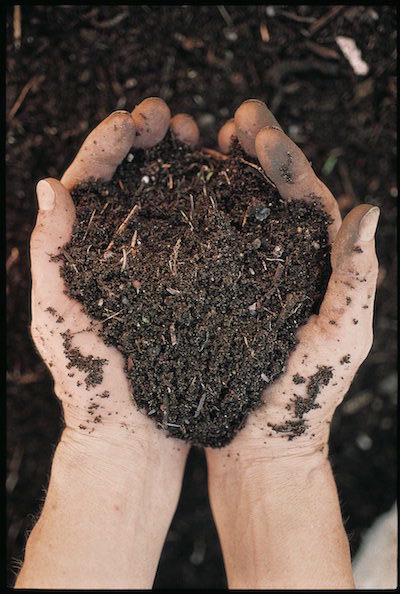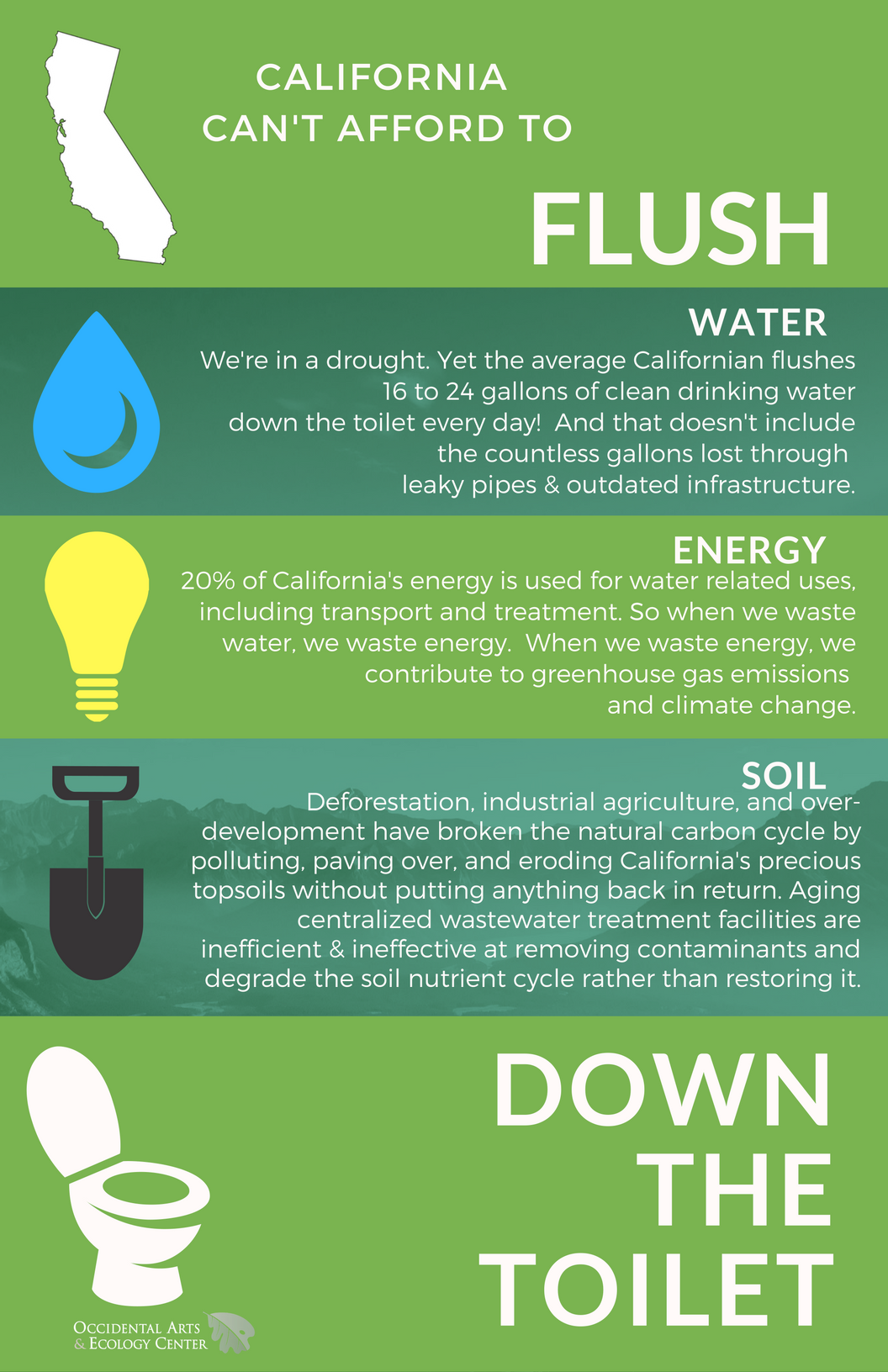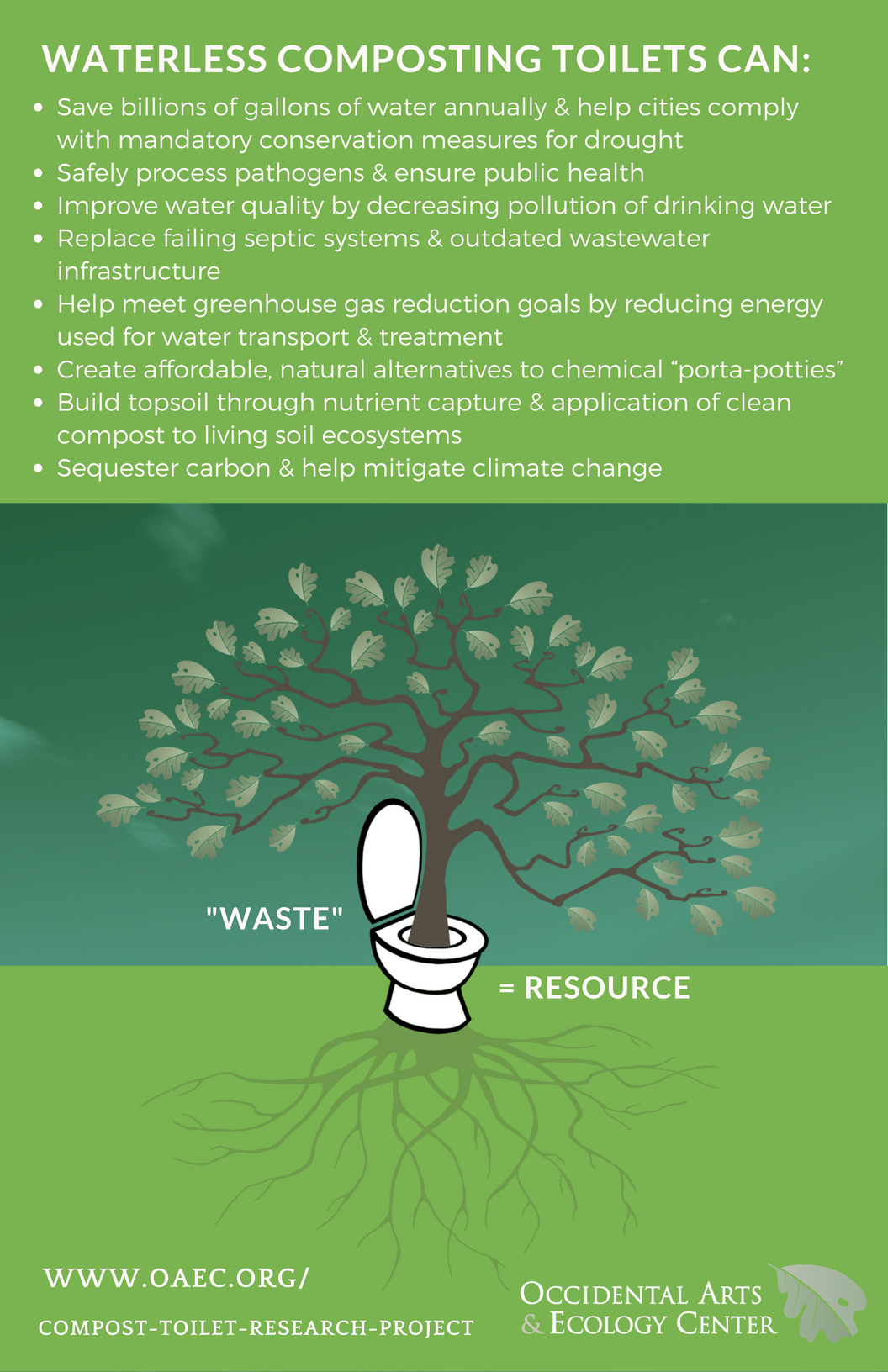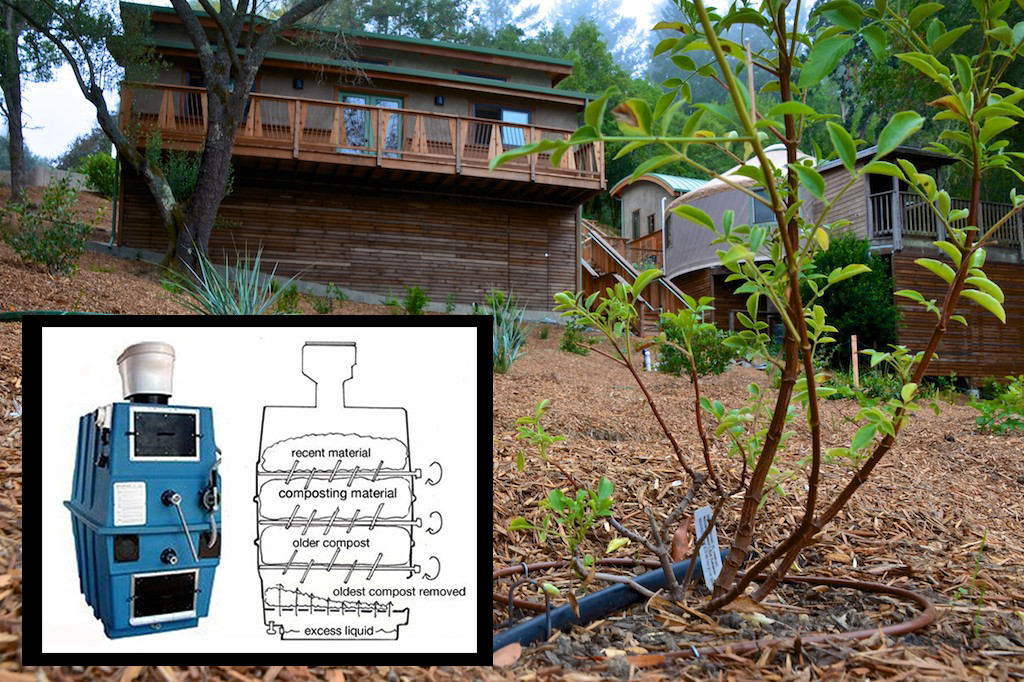CRAPPING INTO CLEAN DRINKING WATER IS A CRAPPY IDEA!
Millions of gallons of clean drinking water are polluted and flushed down the toilet everyday, yet waterless composting toilets are not currently permittable in most of drought-stricken California.
- How can we rely on biology, instead of chemicals and vast amounts of water and energy, to safely process pathogens and protect human health?
- How can we build on a technology that humans have used for millennia to turn our “waste” into a soil-building resource?
- How can we meet the multi-faceted challenges of drought, peak energy, soil degradation and climate change with an innovative “nexus” solution?
PROJECT UPDATES
January 2020 Compost Toilet Project Update – 1st samples sent to the lab
2018 Compost Toilet Project Update – “pleasing government and grandma!”
LONG-TERM GOALS AND IMPACT
We’ve identified the barriers to widespread adoption of composting toilet technology and have a strategic plan to address them:LBarrier: Public Health Concerns Solution: Scientific Research and Testing
Any policy that will support composting toilets depends on the guaranteed protection of public health. We will be working with two local laboratories, as well as soil scientists from UC Davis and Stanford University to rigorously monitor and analyze the finished compost from our on-site composting units for pathogens, parasites, nutrient content, and other contaminants. We want to find out whether ecologically composted human “waste” is safe and beneficial to return to the soil. Finished compost that has been deemed safe will then be used to fertilize trees and native shrubs in our wild lands restoration project. That’s why we’ve nicknamed this campaign our “Toilet-trees” Project!
Barrier: Cultural Conditioning Solution: Demonstration and Education*
One of the major barriers to mainstream acceptance of composting toilets is the misconception that they are stinky or downright uncivilized. Update: composting toilets aren’t just for backwoods outhouses any more! Modern composting toilets are equipped with a urine diversion mechanism, proper ventilation, a balanced ratio of neutralizing carbon material such as sawdust, and most importantly, education and proper instructions for users – all of which help to keep the composting process moving along and foul odors down. (See How do Composting Toilets Work?) Our well-designed, upscale ecological restrooms will provide visitors with a pleasant, “normal” bathroom experience. We aim to please both Government and Grandma!
Barrier: Permitting codes Solution: Documentation and partnership with regulators to change policy.
A key aspect of this collaborative project is to work side-by-side with our local regulators at the Sonoma County Planning Resource Management Department, the Sonoma County Public Health Department Environmental Health Division, and the North Coast Regional Water Quality Control Board. Regulators are eager to reduce rural and urban water use and and are looking for hard data on potential solutions. Specifically, we will be testing the viability of this technology for multi-unit and medium-scale commercial facilities, such as hotels and apartment buildings. Since the majority of our growing population lives in dense, urban settings, this is where solutions will have the greatest impact and where research is most needed. We will provide our county and regional regulators with a technical Report of Findings and will document our successes and failures at every step of the process: navigating the red-tape of government agencies, the dirty details of toilet maintenance, as well as incorporation of user feedback. We will also to create resources (downloadable PDFs) designed for regulators so that they can make informed building and permitting decisions that prioritize public safety, financial efficacy, and environmental integrity.
OAEC’s role in the re-writing of Chapter 16a of the CA Unified Plumbing code for greywater as part of the Decentralized Water Policy Council puts us in a key position to influence future solutions-based dialogue and inter-agency problem solving at the state level.
IMPORTANT NOTE:
We apologize that we simply do not have the staff resources to field general inquiries about composting toilets at this time. We do not yet have the information nor the capacity to assist you in obtaining your own permit. Please, we ask that you NOT call or email our main office or program staff for more information until further notice.
We will post all resources and information for the public to this webpage, including project updates and findings, and resources for regulators – please continue to check back and sign up for our mailing list to receive updates (click the follow button at the top of this page.)
Resources
For more information:
- Laura Allen, Co-Director of Greywater Action and member of the Decentralized Water Policy Council, author of The Water-Wise Home (see chapter on Composting Toilets).
- Greywater Action: this organization is a great source of information for home onsite water conservation such as greywater, roofwater/rainwater catchment and composting toilets.
- Recode: This organization focused on legalizing sustainability in Oregon provides information about composting toilets. Recode evaluated models from Sweden, where 40% of new construction includes composting toilets.









